Kirsten Brichler, Adjunct Faculty, Southwest Minnesota State University; and Douglas Pfeiffer, Marshall MN Professor of Entomology, Virginia Tech, Blacksburg VA
Most people who have grown strawberries or vegetables in the Southeast have had their experiences with slugs. These pests damage low-growing vegetable tissue and can be difficult to control. Here we will present some general information on this group, whose biological details are poorly known to most.
What is a slug?
Slugs are land-dwelling mollusks that are closely related to snails. The main distinguishing feature that sets slugs apart from snails is their lack of a shell. Slugs are soft-bodied, flexible, and have no legs. They have 2 pairs of feelers on their head – the top pair has eyes, while the lower pair is used for smelling. There is a thickened, saddle-like structure on the dorsal surface called the mantle (Fig. 1); along the edges of the mantle are the genital openings, anus and respiratory openings. They are hermaphroditic animals, meaning that each individual will have male and female organs. This allows nearly any two individuals that meet to be able to mate and reproduce. Simultaneous reciprocal mating is common (Fig. 2). Mated slugs will then lay clutches of eggs that hatch into the next generation (Fig. 3a,b). While the eggs in the images are exposed, in nature, these are laid under stones or other protected areas.
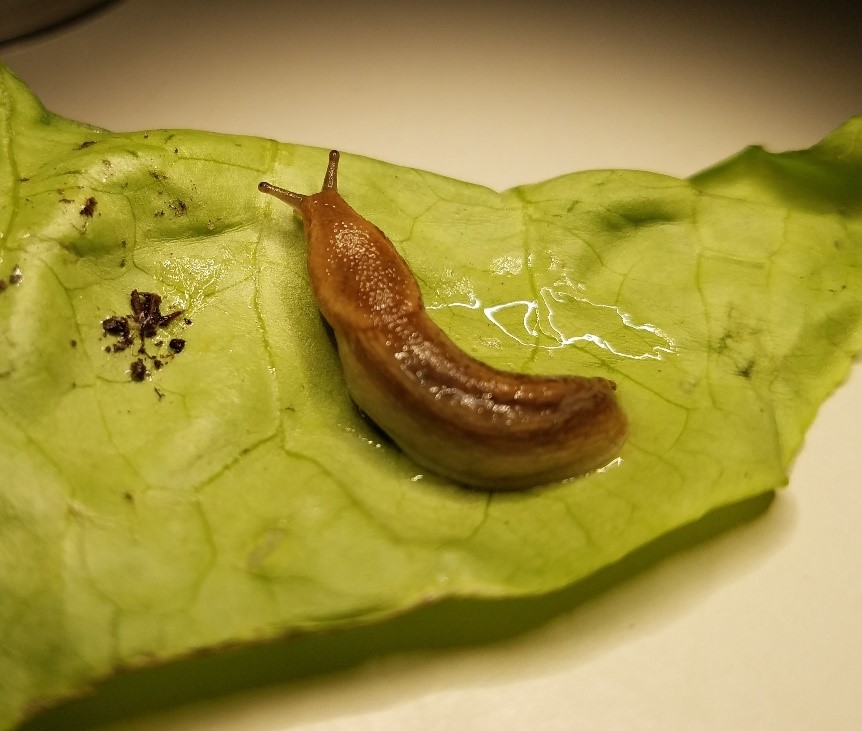
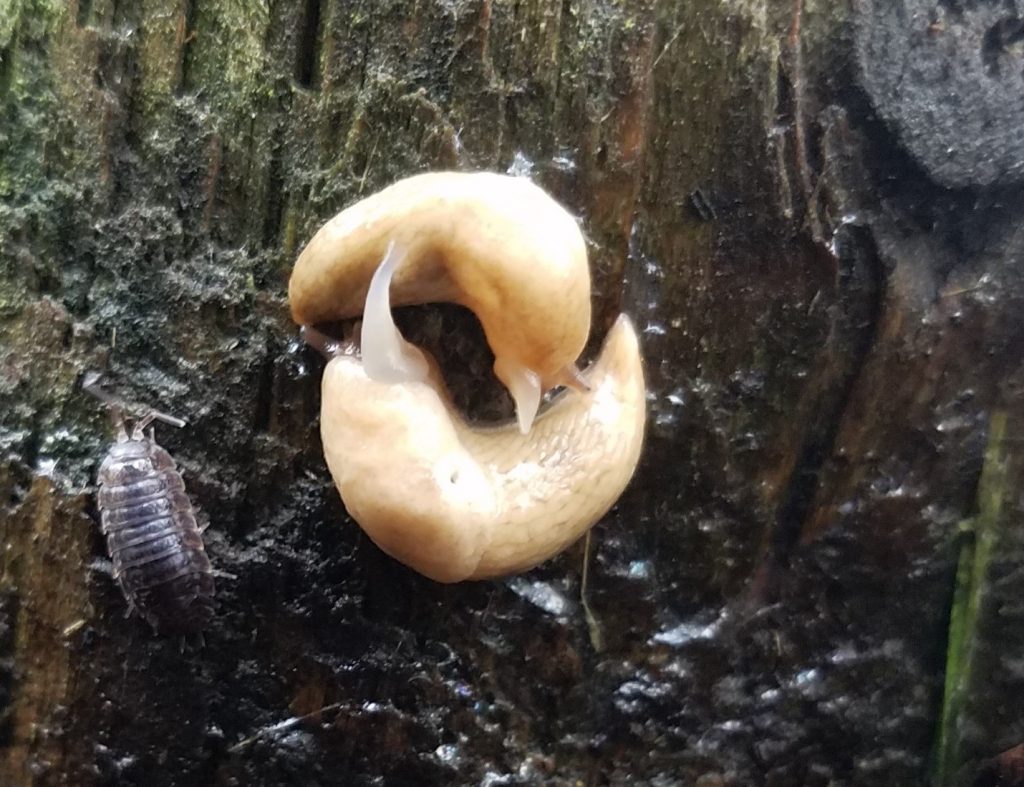
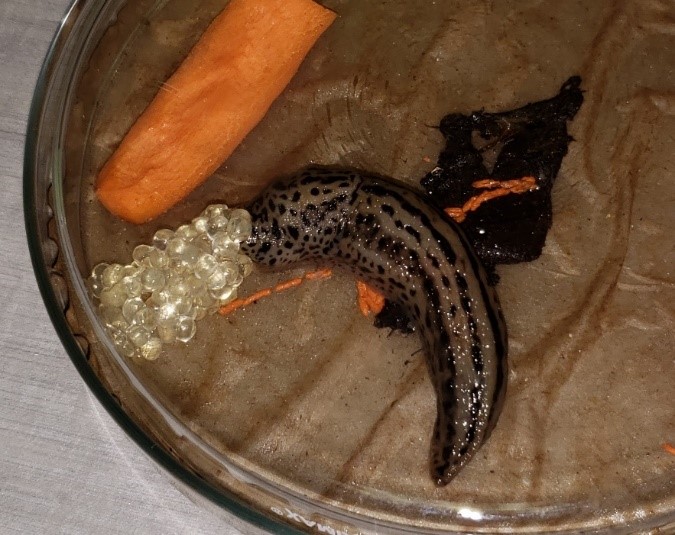
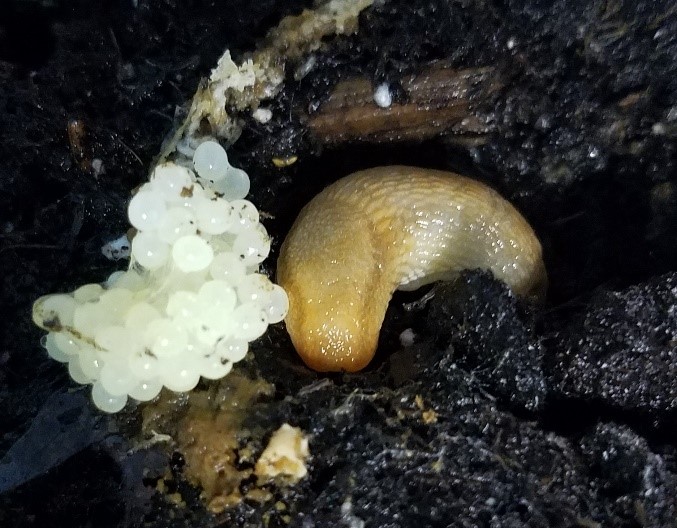
Due to their soft bodies and lack of a protective shell, slugs are highly susceptible to drying out and dying in hot and dry conditions. They are most active during cool and wet times, such as during rainfall and night. Slugs will seek shelter under plant debris and in earthworm burrows during sunny and dry conditions.
Multiple species of slugs are common pests to various food crops and ornamental plants. These species of slugs are considered generalists and will eat a wide variety of plants and fungi. Common species include the gray garden slug (Deroceras reticulatum; Fig. 2), the marsh slug (Deroceras leave; Fig. 4), the dusky slug (Arion subfuscus), and the garden slug (Arion hortensis; Fig. 1). While the exact timing of their life cycles and adult size may differ among these species, they will all consume a variety of plant species.
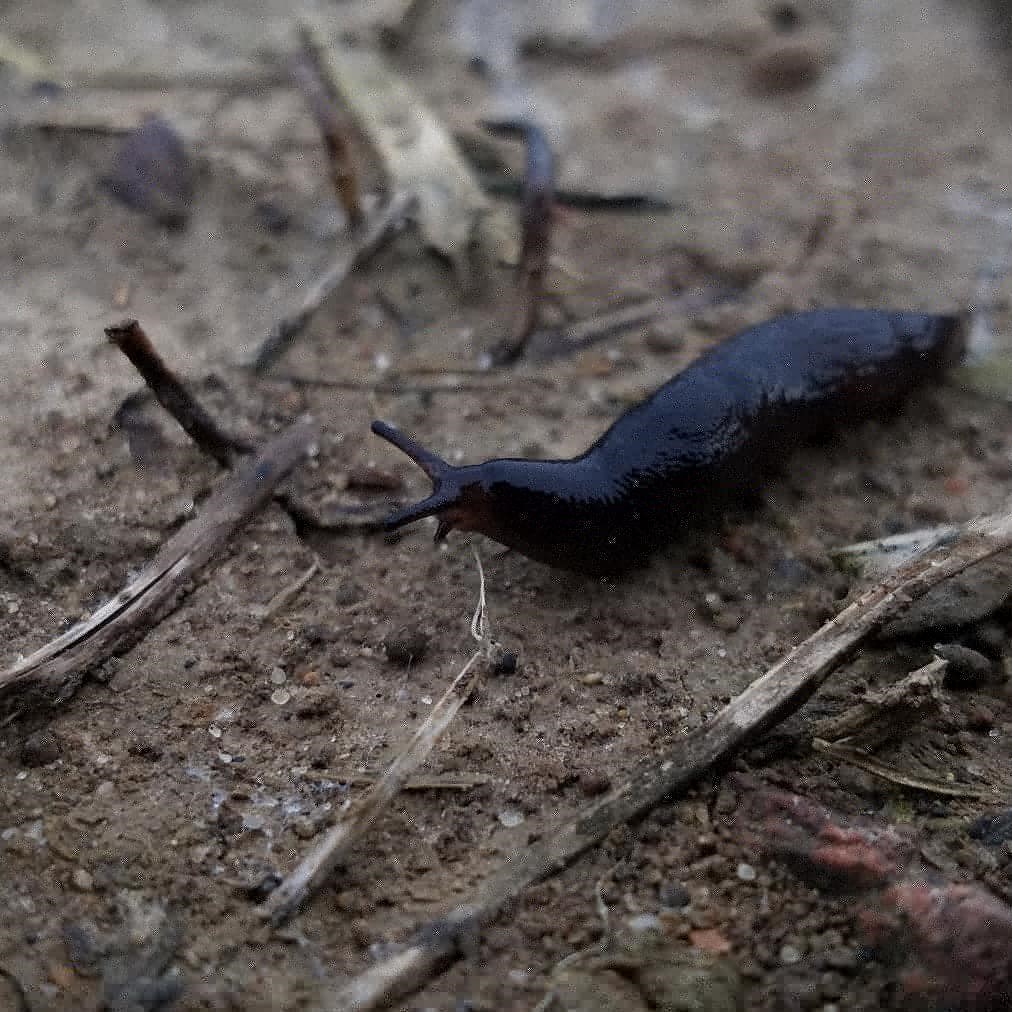
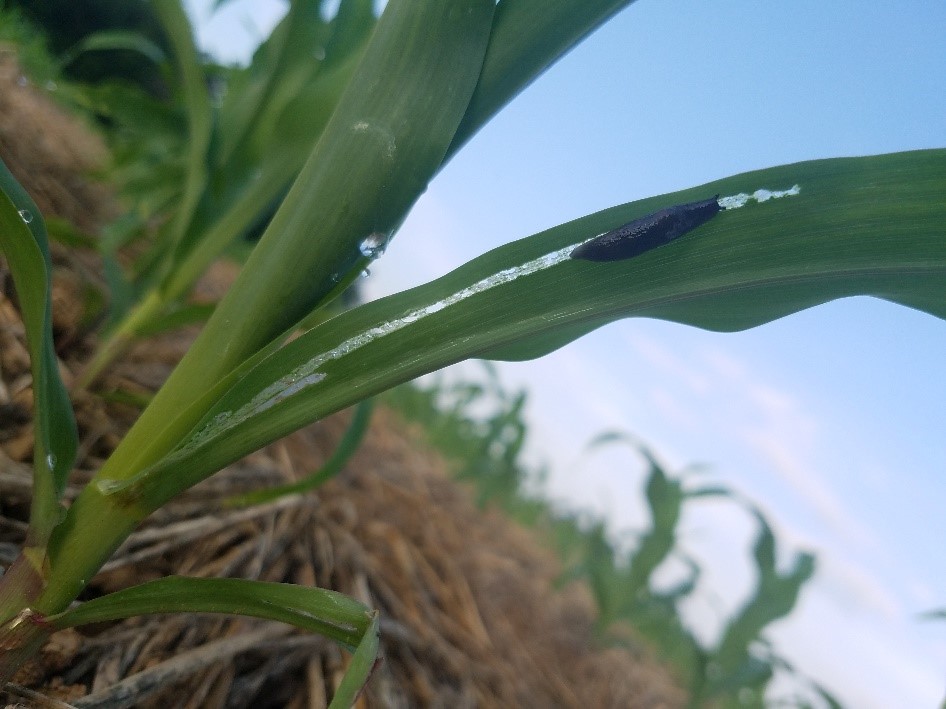
What do they do?
Feeding injury by slugs is created when the slug rasps a sandpapery tongue-like organ (the radula) on the surface of a plant. This rasping will leave rough holes in fruits and holes or “window-pane” damage on the leaves of plants (Fig. 5). Small seedlings may be eaten below their growing point and killed, and fruits with slug feeding are unmarketable. Feeding injury also leaves a point of invasion for other pests and diseases.
Slugs can be significant pests of fruit crops like strawberries. Low growing plants like strawberries create a shady, moist habitat that protects slugs from sunlight and predators. Soft fruits, especially strawberries, growing close to the ground, provide an ideal food source for slugs that is easily accessed under the protection of the plant’s leaves.
How do I know if it’s slug damage?
Slugs will leave ragged holes on ripe fruit and occasionally on leaves of strawberry plants (Fig. 6). While slugs may not be present during sunny daytime hours, there will often be shiny slime trails left at the crime scene. Slugs may be found actively feeding if plants are checked in the early morning, late evening, or during cloudy, rainy days.
Traps can also be set to scout for slugs. This may be as simple as placing a piece of wood or shingle on the ground near plants for a couple days, and flipping it over to count slugs in the early morning. The wood or shingle provides moist shelter that the slugs are attracted to. An alternative trap is a cup or bowl filled with beer or a sugar and yeast solution. Place the bowl in the soil with the rim even with the soil surface. Some of the attracted slugs will slip into the bowl and drown, and be available for counting later.
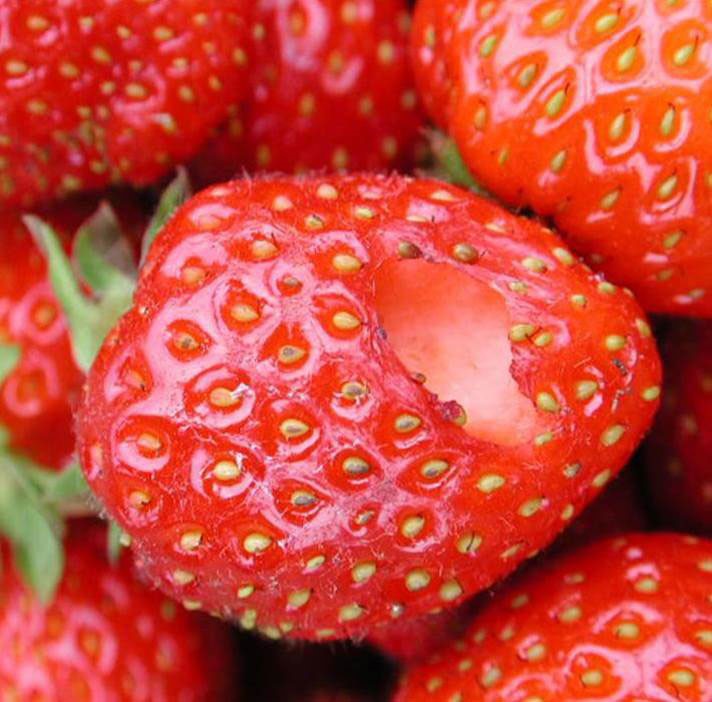
How do I manage pest slugs?
Slugs can be a notoriously difficult pest to manage. Being mollusks, they are not generally susceptible to insecticides used for many other garden pests. While trapping can be used to monitor slug presence, it generally does not offer enough control for satisfactory management.
Interesting view of beer traps for slugs:
Preventative measures for slugs include removing shelter from the area. Shelter slugs can use includes plant debris, weeds, fallen wood, and rocks. If it is something that creates a moist and cool area on the surface of the ground, slugs will likely use it! An area that has very little shelter and is not over-watered should have a greatly reduced population of slugs.
Certain predators can also help manage slug populations. Multiple species of ground beetles (Family: Carabidae), rove beetles (Family: Staphylinidae), and fireflies (Family: Lampyridae) will consume slugs or slug eggs. Avoiding the use of insecticides that harm ground beetles will allow beetle populations to grow and maintain lower slug populations. Other animals that consume slugs include birds and toads.
Few compounds are approved and effective for use on slugs. These molluscicides are available as baits, often in a granular form. Approved baits include iron phosphate, ferric sodium EDTA, and metaldehyde. Baits will be most effective when used during seasons when slugs are most active, generally in the spring and fall. Care should be taken not to apply water-soluble baits before forecasted rain. Slug bait (especially metaldehyde) is toxic to wildlife, pets, and children. Some formulations of iron phosphate are OMRI-listed and suitable for organic production. Slug recommendations are included in the Southeast Regional Strawberry Integrated Pest Management Guide for Plasticulture Production.